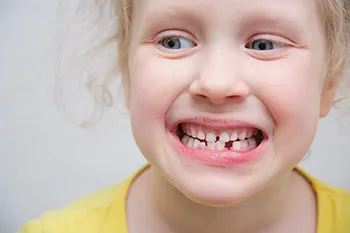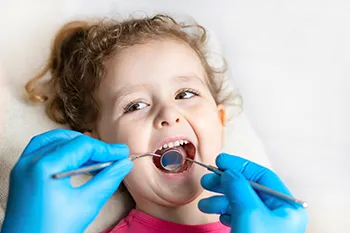Orthodontic treatment for children: when to start and what to expect?
Dr. Hoss Abar
As parents, we strive to provide the best possible care for our children, and their oral health is undoubtedly a top priority. This is where orthodontic treatment comes into play. Orthodontics focuses on diagnosing and correcting dental misalignments, giving children the gift of a healthy, confident smile that will last a lifetime.
In this comprehensive blog post, we will provide information about orthodontic treatment for children. Whether you have noticed your child's teeth appearing crooked, crowded, or misaligned or want to understand more about proactive dental care, this guide will provide the necessary information.
Signs that Indicate the Need for Orthodontic Treatment for Children
As children grow and develop, their teeth and jaws undergo various changes. While some dental irregularities may correct themselves over time, others require surgical orthodontic intervention to ensure proper alignment and functionality. Identifying the signs that indicate the need for orthodontic treatment is essential for addressing potential issues early on. Here are some common dental problems in children that may require orthodontic intervention:
- Crooked or Crowded Teeth:
Crooked or crowded teeth occur when the mouth has insufficient space for the teeth to erupt correctly. This can lead to overlapping or misaligned teeth, making oral hygiene difficult and increasing the risk of tooth decay and gum disease.
- Overbite:
An overbite refers to the protrusion of the upper front teeth over the lower teeth when the mouth is closed. This can result in excessive wearing down of the lower teeth and potential jaw joint problems.
- Underbite:
When the lower front teeth protrude beyond the upper front teeth, it is known as an underbite. It can impact proper biting and chewing, leading to uneven tooth wear and jaw misalignment.
- Crossbite:
Crossbite is characterized by a misalignment of the upper and lower dental arches. It can involve single or multiple teeth, leading to jaw discomfort, uneven tooth wear, and potential skeletal asymmetry.
- Open Bite:
An open bite is present when there is a space between the upper and lower front teeth, even when the mouth is closed. It can affect proper speech and chewing and, in severe cases, may require orthodontic intervention.
- Early or Late Loss of Baby Teeth:
Premature loss of baby teeth or delayed eruption of permanent teeth can disrupt teeth' natural alignment and spacing. Orthodontic evaluation is necessary to address any issues and ensure proper tooth development.

- Difficulty Chewing or Biting:
If a child has trouble chewing or biting food, it may indicate dental misalignment or malocclusion. Orthodontic treatment can help correct these issues and improve their ability to eat and chew comfortably.
- Mouth Breathing:
Persistent mouth breathing can contribute to dental and orthodontic problems, particularly during sleep. It can lead to an improper resting position of the tongue and impact the growth of teeth and jaws.
It's important to note that these signs are general indicators and may vary from case to case. Suppose you notice any of these signs in your child. In that case, it is recommended to schedule a consultation with an orthodontist who can provide a professional assessment and personalized treatment plan to address their specific needs. A thorough examination by an orthodontist is necessary to determine if orthodontic treatment is required. Early evaluation and intervention are key to addressing these issues effectively and optimizing treatment outcomes.
Early Orthodontic Treatment
Interceptive orthodontics, or Phase I treatment, is a specialized approach to orthodontic care. It addresses specific dental and skeletal issues in children during their early developmental stages. This early intervention aims to guide the growth and development of the teeth, jaws, and facial structures, optimizing their alignment and setting the stage for successful orthodontic treatment in the future.
Here's a closer look at the concept of interceptive orthodontics and its potential benefits and goals:
Interceptive Orthodontics or Phase I Treatment
- Interceptive orthodontics involves early evaluation and treatment of orthodontic issues in children, typically between the ages of 7 and 10. During this phase, orthodontists aim to correct specific problems, guide tooth eruption, modify jaw growth, and create a more favorable environment for permanent teeth to come in properly. This approach may involve orthodontic appliances such as expanders, partial braces, or space maintainers.
Potential Benefits of Early Intervention
- Guiding Jaw Growth: Intercepting orthodontic treatment can help guide the growth of the jaws and improve their harmony. By addressing jaw discrepancies early on, orthodontists can create a balanced bite and improve overall facial aesthetics.
- Space Management: Some children may have insufficient space in their mouths for permanent teeth to erupt correctly. Phase I treatment can create or preserve space, preventing tooth crowding and the need for more extensive treatment later.
- Correcting Bite Issues: Early intervention can address bite problems, such as crossbites, overbites, or underbites. Fixing these issues early can improve chewing function, prevent excessive wear on teeth, and reduce the risk of jaw joint problems.

- Reducing Risk of Dental Trauma: Children with protruding front teeth may be at a higher risk of dental trauma from falls or accidents. Interceptive orthodontics can help align and position these teeth to minimize the risk of injury.
- Enhancing Facial Aesthetics: By addressing dental and skeletal issues early on, interceptive orthodontics can improve facial aesthetics, boosting a child's self-confidence and overall well-being.
Goals of Interceptive Orthodontics
- Creating Proper Alignment: Phase I treatment aims to establish proper alignment of the teeth, jaws, and facial structures. This lays the foundation for more successful orthodontic treatment as the child grows.
- Optimizing Growth Potential: By guiding jaw growth and development, interceptive orthodontics can help ensure that a child's teeth and jaws reach their full potential in size, position, and harmony.
- Simplifying Future Treatment: Early intervention can address specific issues when they are less complicated to treat. This may reduce the need for more extensive orthodontic treatment in the future, such as extractions or jaw surgery.
- Improving Oral Function: By correcting bite issues and aligning teeth, Phase I treatment enhances oral function, including biting, chewing, and speaking, improving overall oral health.
It's important to note that interceptive orthodontics may not be necessary for all children. The decision to undergo Phase I treatment is based on the individual's unique dental and skeletal needs, as determined by an orthodontist following a comprehensive evaluation.
Potential Discomfort or Side Effects
Orthodontic treatment can cause temporary discomfort or minor side effects. However, there are several ways to manage them effectively. Here are some common concerns and suggestions for addressing discomfort during treatment.:
- Discomfort or Soreness: It's normal to experience discomfort or soreness, especially in the first few days after getting braces or following adjustments. This is due to the pressure exerted on the teeth and gums. The discomfort typically subsides within a week.
- Irritation or Ulcers: Orthodontic appliances may occasionally cause irritation or small ulcers on the inside of the cheeks, lips, or tongue. This can happen due to friction or contact with the braces or wires.
- Allergic Reactions: In rare cases, individuals may experience an allergic reaction to the materials used in orthodontic appliances, such as latex or certain metals.
- Temporary Speech Changes: Some individuals may experience slight speech changes or difficulty pronouncing certain sounds during the initial adjustment period. This is typically temporary and improves with time as your mouth adjusts to the presence of orthodontic appliances.
- Loose or Broken Appliances: Braces or other orthodontic appliances may break loose. This can be due to external factors such as eating hard or sticky foods or accidental trauma.
What is the cost of children's orthodontics?
The cost of orthodontic treatment for children can vary based on various factors. Those factors include the type of appliance used, the complexity of the case, and the duration of treatment.
The best way to determine your child's orthodontic treatment cost is to consult with an orthodontist. They will evaluate your child's specific needs and provide you with a personalized treatment plan and cost estimate.
Remember that investing in your child's orthodontic treatment is an investment in their oral health and overall well-being. It's important to prioritize their dental needs and consult with a qualified orthodontist. They can provide a comprehensive evaluation and discuss the associated costs and available payment options.
Contact your Pinole Orthodontist, Dr. Hoss Abar, DDS, MSD at Abar Orthodontics, to learn more about Orthodontic treatment for children.
Resource:
Choosing the right Orthodontic Treatment for your needs.
This media/content or any other on this website does not prescribe, recommend, or prevent any treatment or procedure. Therefore, we highly recommend that you get the advice of a qualified dentist or other medical practitioners regarding your specific dental condition.
More To Explore
About Us
We believe that every patient deserves to feel confident about their smile. Years of experience creating beautiful and flawless smiles.
© 2024Abar Orthodontics | All rights reserved | Powered by:Vigorant, Inc.
